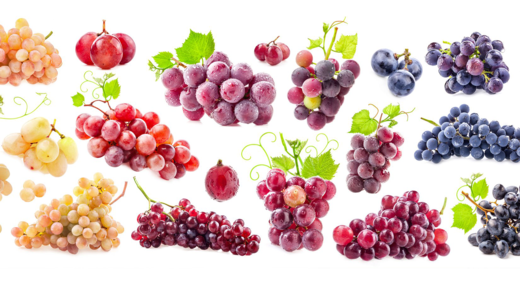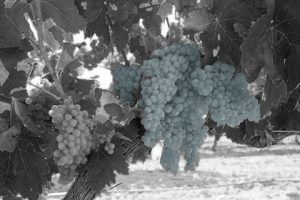Wine Gazette
An introduction to grape varieties (cépages) in French White Wines
There truly is a wine for every palate. From dry to sweet, oaky to tropical, wines can have vastly different flavor profiles. French white wines are some of the best the world has to offer. This introduction will help a wine novice understand which varietal, or cépage, will best complement a meal or special occasion.
There are five basic components that determine the flavor of wine: sweetness, acidity, tannin, alcohol, and body.
Sweetness, or the lack thereof, is often the first characteristic we notice when tasting wine. A sweet wine will make your taste bud tingles, where a dry wine will taste flattered on the tip of your tongue.
Acidity equates to tartness. It often makes your mouth feel wet and the front and sides of your tongues may tingle. Wines with higher acidity feel zesty, less rich.
Tannin in wine is from phenolic compounds that add bitterness. It will make your tongue and mouth feel dry. Tannin is earthy, herbaceous, and more perceptible in red wines.
Wine, just like beer and liquor, has varying levels of alcohol. The highest alcohol by volume (ABV) found in wine is around 20 percent, though the average is 11-13 percent. The more alcohol in a glass of wine the more you will perceive a warming sensation in your throat and chest. The higher alcohol content also leads to bolder flavors.
The final characteristic, the body, is a composite of the other components. A full-bodied wine will be richer and bolder, with more tannin and higher ABV. A light-bodied wine will have less tannin and higher acidity. It will have more red fruit flavors as opposed to black fruit flavors.
How do common French white wine cépages stack up? Let’s take a look.
Chardonnay
Chardonnay is a medium- to full-bodied white wine usually associated with flavors of oak, vanilla, and butter. Medium-bodied versions tend to have higher acidity with pineapple and yellow or green apple notes. They tend to have a higher than average alcohol content and pair well with creamy, buttery foods including lobster, crab, and pumpkin.
Sauvignon Blanc
Sauvignon Blanc is a light-bodied, highly acidic wine known for its notes of honeydew melon, passion fruit, lime, and white peach. Many also have a tropical fruit flavor, like guava or kiwi. With oak aging, they often develop notes of pie crust, vanilla, and cream. Sauvignon Blanc is a great summer wine and pairs well with herb-forward and spicy foods.
Semillion
Semillion grapes produce a plethora of different wines, most notably the dessert wine Sauternes. When you see the label Semillon, you can expect an oaked wine a bit similar to Chardonnay. With notes of beeswax, chamomile, lemon, and peach, this is a medium-bodied, medium acidity wine with low tannin. It pairs well with rich meals like pork chops and veal. It also pairs well with blue cheese, which helps to bring out a surprising saline note.
Muscadet
Muscadet is a bone-dry white wine with high acidity and a light body. This is a wine for individuals who like neither sweet nor fruity wines. The dominant notes are pithy citrus including lime and lemon as well as unripe green apple and green pear. Many vintages, particularly from coastal vineyards, have a saline note described as “seashell.” Muscadet pairs well with mussels, oysters, scallops and other bivalves. It is also surprisingly paired with cheeses as disparate as Brie, Gruyere, and Parmesan.
Chenin Blanc
Chenin Blanc is a light-bodied varietal with high acidity and a honey-tinged flavor and color. With an average ABV and a potential for greater diversity in flavor notes, Chenin Blanc can be a bit tricky to pin down, but it is normally dominated by flavors of yellow apple, pear, quince, and honey. It pairs well with Chinese cuisine and rich fish or chicken dishes. In its sweeter incarnations, it is a lovely dessert wine.
Viognier
Viognier (pronounced vee-own-yay) is a rich, full-bodied white with notes of tangerine, peach, mango, rose, and honeysuckle. The fullness of this wine comes not from the tannin, but from a rich, oily base and relatively low acidity. It pairs well with delicate or sweet seafood like scallops and shrimp, particularly when cooked in aromatic herbs.
Muscat Blanc
The Muscat grape is one of the oldest cépages, originating from ancient Greece and grown all across Italy and parts of France. Muscat Blanc can be finished in many styles, from dry to sweet, still and sparkling. It’s a light-bodied, acidic wine. The dominant notes are orange blossom, meyer lemon, other citrus, and honeysuckle. Drier styles pair well with crisp salads and sushi, sweeter styles pair well with angel food, almond, and vanilla cakes.
Riesling
Riesling can produce a number of styles ranging from bone-dry to dessert sweet, but it is most commonly known as a sweet–but not too sweet–light-bodied wine. It has a high acidity and a lower than average ABV. Flavor notes include lime, green apple, beeswax, and jasmine. It pairs well with spicy Asian cuisines like Thai, Vietnamese, and Indian.
Pinot Gris
Pinot Gris, also known as Pinot Grigio, is believed to be a mutation of the red Pinot Noir grape. It produces zesty, acidic wines with notes of lime, meyer lemon, green apple, and white nectarine. It often has the reputation of being a good wine for beginners, but it can have a surprisingly complex nose depending on the finishing. It pairs well with fruit, both fresh and cooked in savory dishes.
Gewürztraminer
Known traditionally as a German wine, Gewürztraminer has recently gained a reputation as the perfect pairing for Indian and Thai food. Its floral profile and ginger notes stand up well against intensely spiced food. Besides ginger, its primary flavors are rose, lychee, and citrus. It has a slightly higher than average ABV and low acidity that leads to a fuller medium body. Combined with an off-dry, nearly sweet palate, Gewürztraminer can be surprisingly complex.
Aligote
Aligote is a light-bodied, dry citrusy wine. More herbal than most varietals, and has notes of fresh-cut herbs, apple, unripe peach, and smoke. It is a bone-dry white with high acidity. This mineral, palate-cleansing finish works well with seafood soups and soft cow’s milk cheeses.
The best way to determine the right wine pairing is to consider the five characteristics of wine, but it is important to always take personal taste into consideration. The perfect wine is one that will harmonize with a meal and also appeal to the people at the table who will be drinking it.
Cheers!


